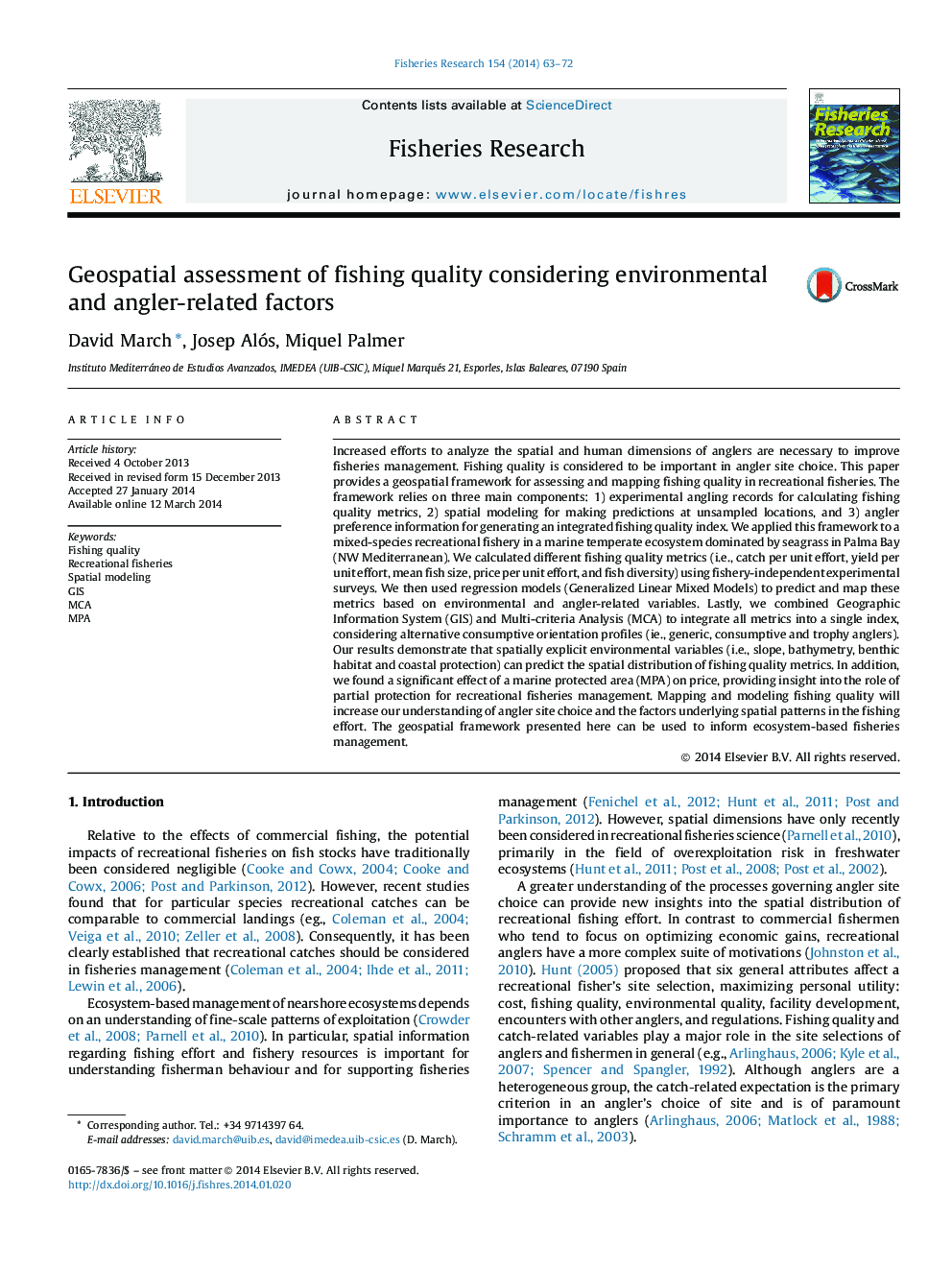| Article ID | Journal | Published Year | Pages | File Type |
|---|---|---|---|---|
| 6385898 | Fisheries Research | 2014 | 10 Pages |
â¢We provide a geospatial framework for assessing and mapping fishing quality.â¢Environmental and angler-related variables affect fishing quality.â¢Coastal protection affects catch value.â¢GIS and MCA are effective tools for mapping and modeling fishing quality.
Increased efforts to analyze the spatial and human dimensions of anglers are necessary to improve fisheries management. Fishing quality is considered to be important in angler site choice. This paper provides a geospatial framework for assessing and mapping fishing quality in recreational fisheries. The framework relies on three main components: 1) experimental angling records for calculating fishing quality metrics, 2) spatial modeling for making predictions at unsampled locations, and 3) angler preference information for generating an integrated fishing quality index. We applied this framework to a mixed-species recreational fishery in a marine temperate ecosystem dominated by seagrass in Palma Bay (NW Mediterranean). We calculated different fishing quality metrics (i.e., catch per unit effort, yield per unit effort, mean fish size, price per unit effort, fish diversity) using fishery-independent experimental surveys. We then used regression models (Generalized Linear Mixed Models) to predict and map these metrics based on environmental and angler-related variables. Lastly, we combined Geographic Information System (GIS) and Multi-criteria Analysis (MCA) to integrate all metrics into a single index, considering alternative consumptive orientation profiles (ie., generic, consumptive and trophy anglers). Our results demonstrate that spatially explicit environmental variables (i.e., slope, bathymetry, benthic habitat and coastal protection) can predict the spatial distribution of fishing quality metrics. In addition, we found a significant effect of a marine protected area (MPA) on price, providing insight into the role of partial protection for recreational fisheries management. Mapping and modeling fishing quality will increase our understanding of angler site choice and the factors underlying spatial patterns in the fishing effort. The geospatial framework presented here can be used to inform ecosystem-based fisheries management.
